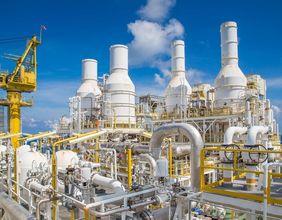Highlights
- Australia’s energy prices are vulnerable to global disruptions
- Oil imports from the Middle East pose strategic supply risks
- Renewable energy shift could cushion future volatility
Australia faces increasing vulnerability to global energy market shocks, with heavy reliance on imported oil products and closely tied domestic energy prices. According to the Institute for Energy Economics and Financial Analysis (IEEFA), the nation's exposure has become more critical amid recent geopolitical developments.
Tensions in the Middle East have intensified, especially after Iran's parliament voted to close the Strait of Hormuz — a pivotal route through which approximately 20% of the world's daily oil supply passes. For Australia, this is significant, as the country imports 15% of its crude oil and 5% of petroleum products from the Middle East, primarily Saudi Arabia and the United Arab Emirates. Moreover, about 30% of Australia's refined oil flows through this strait.
Australia's domestic oil production has been in decline, leading to 90% of its oil requirements being met through imports. In 2024 alone, the petroleum import bill surpassed $55 billion, while in 2022, the figure reached $65 billion. At the end of May 2025, global oil prices rose from US$64 to US$78 per barrel, and some forecasts suggest they could exceed US$100 per barrel if regional tensions escalate.
Adding to the concern, Australia's fuel reserves are notably limited. The country maintains just 31 days of petrol and 26 days of diesel, significantly below the International Energy Agency’s recommended 90-day stock level. This thin buffer leaves the economy susceptible to supply disruptions.
Gas prices are also a key concern. Although Australia is a major player in liquefied natural gas (LNG) exports—shipping 81 million tonnes in 2022–23, as per the Department of Industry Science and Resources—the domestic market remains affected by global pricing trends. As the Australian Competition and Consumer Commission has noted, the scale of exports has effectively tethered domestic gas prices to international benchmarks.
Amid these challenges, the IEEFA points to opportunities for insulation. Expanding renewable energy adoption could reduce dependence on gas and coal for electricity generation. With wind and solar increasingly setting lower wholesale electricity prices, their role is crucial. Battery storage further enhances this shift.
Additionally, policy mechanisms such as incentivising domestic gas supply over LNG spot exports and exploring export taxes on spot sales could help ease domestic market tightness. The situation in Queensland during 2021–22—where the state transitioned from a net exporter to a net importer of gas—highlights the pressure from international demand.
Companies within the S&P/ASX 200 index that are active in the energy sector, such as Woodside Energy Group (ASX:WDS) and Santos Ltd (ASX:STO), remain in focus during such geopolitical shifts, given their exposure and strategic importance in both global and domestic energy supply chains.
As the world edges toward uncertainty, Australia’s path forward may rest in accelerating its energy transition and recalibrating its domestic resource priorities.





